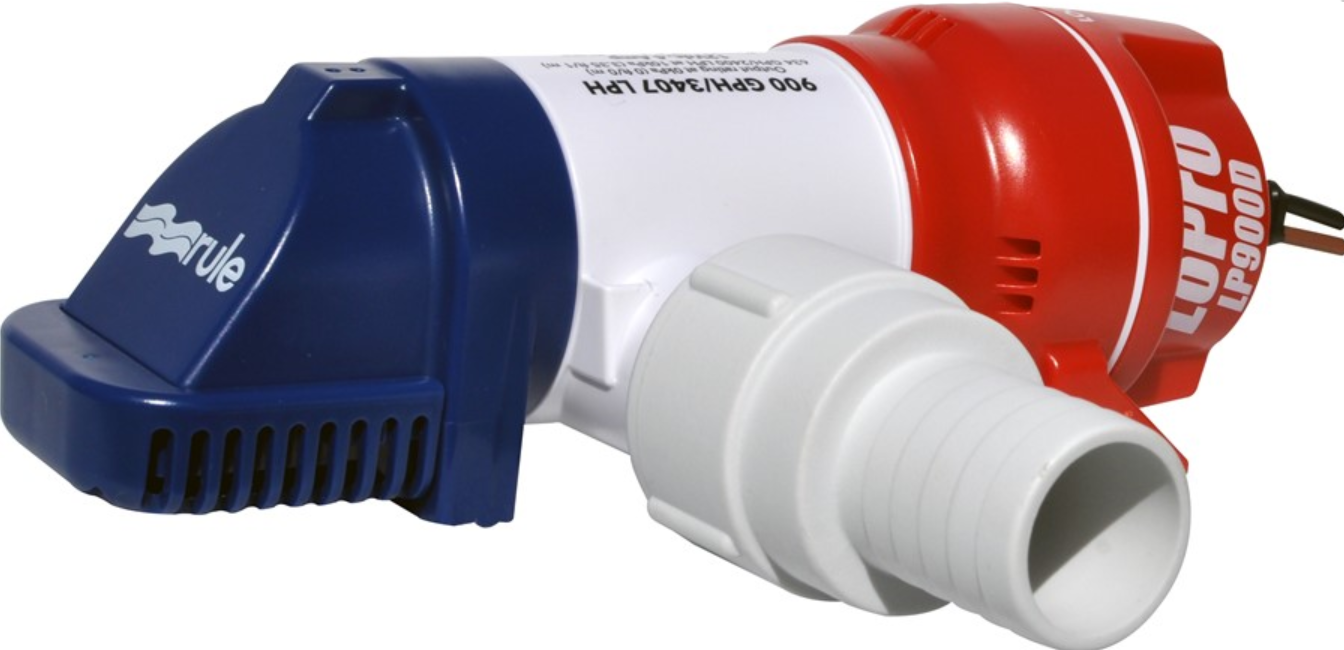Are Rule Bilge Pumps Worth The Extra Money?
We are often asked the question “is it worth the extra money to buy a Rule bilge pump?” For many boat owners the Rule brand name is so familiar that it is the automatic choice when you think of a bilge pump, but these days with ever more products being manufactured in the far-east there are certainly quite a few other bilge pumps to choose from.
For some boat owners the choice comes down to the simple matter of the trusted reputation that Rule has built up over the years, and certainly we have come across one or two customers who are absolutely, unshakably wanting a Rule bilge pump, and nothing else will do.
For others the choice is not as clear, and when budgets are constrained it is not always fine to go with a more expensive option when other options might do just as well.
Now at this point we should make clear that at Boat Fittings we do not (at present) sell any Rule pumps. If you fall into the category of “Only A Rule Bilge Pump Will Do” then I guess you will want to leave this page and move on. I will also say that on the boats that I and my family have had, the chances are that when we went into a chandlers shop (Piplers on Pool quay) or one of the Force-4 shops the chances are that we walked out with a Rule pump and thought no more about it. Also it may well be that one day we will sell Rule pumps as well as the ones we currently sell, if we come to a point where we think we can offer them at an equal level of value for money.
All of the pumps that we currently sell on Boat Fittings have been manufactured in the far-east, and having sold many, and used them ourselves our overall feeling is that we could not be happier with them. There is a certain similarity of design to Rule pumps (I think we can assume this is quite deliberate) but the more important question is how do they perform, and do they have the functionality that you are after from a bilge pump?
Probably the first two considerations when choosing a bilge pump are it’s flow rate (often quoted in gallons per hour) and is it a manual or automatic pump. The manual pumps have a simple on or off operation, the automatic ones having a built-in float-switch so that the bilge pump can be operated automatically when the water level reaches a certain height, and then turn off again automatically when the water level is reduced.
Other considerations for choosing a bilge pump include:
- Voltage (usually 12V but some bilge pumps are 24V)
- Physical size, ie does it fit where you want to put it?
- Mounting method (most are fixed to the boat bilge using the lower strainer moulding, the the main body of the pump clips into)
- Head, ie how high can the pump push water at a satisfactory rate?
There are some models of Rule pump that have special functionality such as this low-profile pump, which I expect has got a few people out of trouble in confined installation areas.

Besides the ‘head line’ specifications, other things to watch out for are whether the pump is ‘happy’ to be run dry it to be kept running even if there is no water for it to pump, and what the current draw of the pump will be. For example you might be wanting to use an existing switch panel that has for example a 10Amp rating, it is no good buying a bilge pump that draws 12Amps. When you ‘unbox’ your new bilge pump you want to be happy with the feel and quality of the unit, and also find a good set of instructions in the box. In both of these respects we have been entirely happy with the units we have on sale.
I am not saying that “all bilge pumps are equal” but rather that there are other good options besides Rule. My suggestion is to consider the specifications and the price and make a decision that feels for your circumstances.
When looking at reliability it is important to look at the system as a whole. You expect your bilge pump to work when you have got down to the boat, are settling in for the weekend and want to pump out that few inches of water that has somehow accumulated in the bilges since you were last on the boat. By contrast you NEED your bilge pump to work when you are out at sea and something has gone wrong.
When you look at the system as a whole there are multiple failure modes including:
- A fuse has blown
- A hose has come off or fractured
- The bilge pump has come loose
- A wire has come loose
- You don’t have enough power in the battery
- A float switch has stopped working (usually because somethings has got lodged in the way)
- Your bilge pump has got clogged
- Your bilge pump has stopped working for what ever reason
The varied nature of these things that can go wrong lead to two things, the first is to have multiple bilge pumps and build in redundancy to the system. The second is to regularly test and inspect your bilge pumping system.
The value of redundancy though, is key. If you have 3 bilge pumps the chances of all 3 having a mechanical failure at the same time are almost nill. If you have three bilge pumps with three different wiring routes and three different fuses then the chances of 3 electrical failures happening at the same time is very small. There is an argument to have at least one of your bilge pumps wired in a way that bypasses your usual wiring / main switch panel for this reason. And lastly just to say we are not suggesting that 3 bilge pumps should be seen as a maximum.
A selection of types and sizes of 12V bilge pumps can be found HERE
If you found this guide useful or interesting you might like to sign up to our newsletter, so that we can let you know when our next guide has been published.


